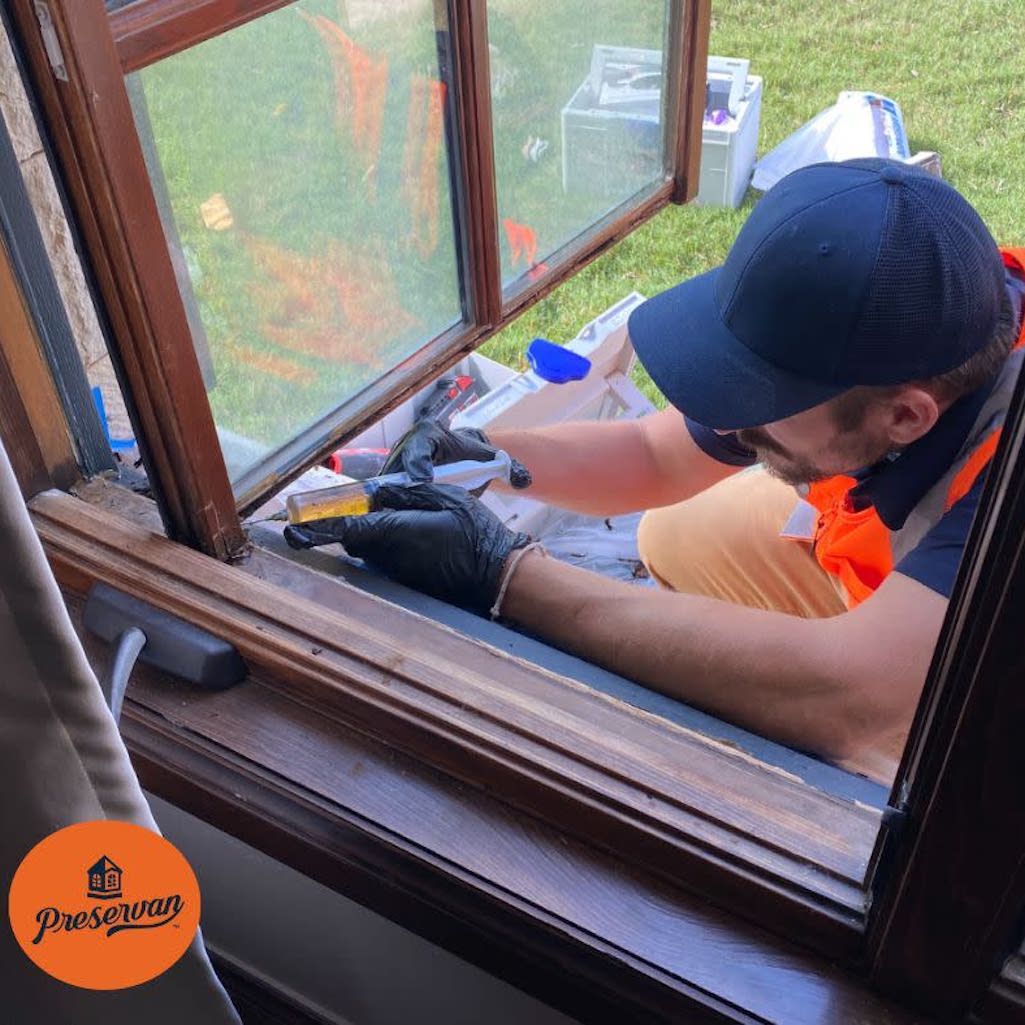
- Understanding the role of windowsills during winter helps homeowners recognize how these structures protect against moisture, drafts, and heat loss.
- Learning how to repair a rotted windowsill involves assessing the damage, removing decayed wood, applying durable fillers, and repainting for long-term protection.
- Preventing future sill rot requires regular maintenance such as resealing gaps, repainting exposed areas, and keeping gutters and drainage systems clear of debris.
When the temperatures begin to drop and the first frost appears, you might start to think about ways to make your home stay warm. Preparing your home for winter is more than just turning up the thermostat or checking your heating system. One area that often gets overlooked is the exterior of your windows, particularly the windowsills. If you want to keep your home comfortable and safeguard it from moisture damage, learning how to identify a rotted windowsill and properly maintain your windows is essential.
Why Repairing Rotted Window Sills Before Winter Is Important
Window sills serve a more significant purpose than just adding visual appeal to your home’s exterior. They are a key structural component that helps channel water away from your windows and the walls of your house. During winter, your windowsills are exposed to freezing temperatures, snow, and moisture that can seep into cracks and crevices. If these areas are not properly sealed or maintained, water can penetrate the wood, leading to rot and decay. Once rot sets in, it can spread quickly, weakening the structure and potentially leading to costly repairs. A damaged or rotted windowsill can also impact your home’s insulation. Even small gaps or cracks can allow cold air to enter and warm air to escape. This results in your heating system working harder to maintain a comfortable indoor temperature.
How to Spot a Rotted Window Sill
Before you can repair a rotted windowsill, you need to know how to identify wood rot. The signs can be subtle at first, but early detection can save you time and money. Start by inspecting the wood along the bottom of your window frame. Look for soft or spongy areas when you press lightly with a screwdriver or your fingers. Paint that is peeling, bubbling, or discolored may also indicate underlying moisture damage. If you notice any areas where the wood looks darker or feels damp, you are likely dealing with rot. Another sign of trouble is the presence of mold or mildew along the edges of the window. Excess moisture often accumulates here when the sill no longer drains properly. Finally, check for any gaps or cracks in the caulking or paint, which can allow water to seep in and cause further deterioration.
How to Repair a Rotted Window Sill
Once you have identified a problem, it’s time to take action! With the right approach, you can restore both function and appearance of a rotted windowsill.
1. Assess the extent of the rot
To repair a rotted windowsill, start by determining how much of the sill is affected. If the damage is minor and limited to the surface, you may only need to use a wood filler to restore it. However, if the rot extends deep into the wood or affects the surrounding structure, it may require more extensive repairs.
2. Remove damaged wood and clean the area
Use a chisel or utility knife to carefully remove the rotted sections. Continue scraping until you reach solid, dry wood. During the process of repairing a rotted windowsill, it’s important to remove ALL the decayed material so the problem does not return. Once the area is cleared, clean it thoroughly to remove dirt, dust, and any remaining debris.
3. Apply wood hardener or filler
For small to moderate rotted windowsill repair projects, apply a wood hardener to reinforce the remaining wood fibers. This will create a solid base for the filler. Once the hardener has dried, use an exterior-grade epoxy or wood filler to rebuild the missing sections. Shape it to match the original contour of the sill and allow it to cure fully according to the manufacturer’s instructions.
4. Sand, prime, and repaint for protection
After the filler has dried, sand the surface smooth to create a seamless transition between the repaired rotted windowsill area and original sections. Apply a high-quality exterior primer followed by at least two coats of paint. This not only improves the appearance but also adds a protective barrier against future moisture infiltration.
How to Prevent Future Window Sill Rot
Once you have repaired the rotted windowsills, maintaining them should be part of your regular home care routine. Perform periodic inspections throughout the year, especially after heavy rain or snow, to spot early signs of wear or damage. Repainting your windowsills every few years provides an extra layer of protection against moisture. Pay close attention to caulking and weatherstripping around your windows. These materials can deteriorate over time, leaving small gaps that allow water and cold air to enter. Reapply fresh caulk when necessary to keep the area sealed and secure. Additionally, ensure your home’s exterior drainage system is functioning properly.
Repair A Rotted Window Sill Before Winter With Preservan
Preparing your home for winter means thinking beyond just interior comfort. By taking the time to inspect and repair your windowsills, you can prevent costly water damage, improve energy efficiency, and maintain your home’s structural integrity. Having a professional repair a rotted windowsill is a must before winter weather hits. Combine this task with other winter maintenance efforts, and you will create a well-protected, energy-efficient home ready to face the cold season ahead.
If you are interested in learning more about our services other than repairing a rotted windowsill, visit our website. You can also book an appointment or give us a call with any questions you may have. If you aren’t sure where to begin, contact Preservan Wood Rot Repair and our wood rot repair experts will take care of the rest. Our epoxy treatment is affordable and eco-friendly, designed to restore your investment. Check out our website for more details and to schedule an appointment today!
Contact Preservan
Phone: (866) 875-4280
